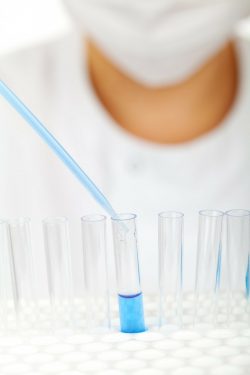What is Ketamine Made Of?
In spite of its use as a hallucinogenic-type “club” drug, ketamine belongs to the Schedule III class of controlled substances. Ketamine has a range of medical uses within human and veterinary medicine, which accounts for its Schedule III classification.
From a literal standpoint, the question “what is ketamine made of” is pretty straightforward. In actuality, “what is ketamine made of” has more to do with its intended purpose and the dosage amount used.
Ketamine’s chemical make-up allows for varied effects in terms of its interactions with the brain and body at different dosage levels. So, the answer to “what is ketamine made of” lies more so in its effects than its ingredients.
Ketamine Ingredients
First synthesized in 1962, ketamine hydrochloride was developed as an alternative to PCP’s use as an anesthetic. As a non-barbiturate-type liquid substance, what is ketamine made of can best be described by its chemical designation, dl 2-(0-chlorophenyl)-2-(methylamino) cyclohexanone hydrochloride. In actuality, the formula for synthesizing ketamine entails a series of intricate steps that only the manufacturers of the drug can carry out.
According to the U. S. National Library of Medicine, ketamine hydrochloride has a slightly acidic pH ranging anywhere from 3.5 to 5.5. Solutions used for injection purposes may contain 10, 50 or 100 milligrams of ketamine base per one liter of sodium chloride solution. In effect, the answer to “what is ketamine made of” is ketamine combined with a salt-based solution that allows for easy absorption by the body’s cells.
Ketamine Effects
Ketamine, also known as Special K, has fast-acting effects, as an anesthetic and as a recreational drug. What is ketamine made of in terms of effect? Unlike other anesthetic drugs that block pain signals from reaching the brain, ketamine essentially “disconnects” the brain from the body’s sensations. The drug’s hallucinogenic effects stem from the expanded awareness that results when the brain no longer has to process incoming information from the body.
According to the Encyclopedia Britannica, ketamine produces three main effects:
- Pain relief
- Amnesia
- Sedation
These effects can vary depending on what is ketamine made of as far as dosage amounts go.
Medical Uses
While ketamine’s primary use acts as a tranquilizer for veterinary purposes, this drug can also be use for diagnostic and surgical procedures in humans, according to the National Highway for Traffic Safety Administration. Common uses for ketamine include:
- General, short-acting anesthetic for children
- Short-acting anesthetic for elderly patients
- For induction purposes prior to surgery
For the most part, what is ketamine made of in terms of dosage amount determines its use as a medical treatment.
Recreational Uses
As a recreational drug, ketamine belongs to the psychedelic class of hallucinogens. Ketamine can be injected in solution form as well as “cooked” down to a powder and snorted. It also comes in pill form.
Ketamine’s easy absorption into the brain produces varying effects according to dosage amount:
- Small doses along the lines of 30 to 50 milligrams of powder brings on a dream-like state
- Large doses of 100 to 250 milligrams (powder) produces a full dissociative effect, also known as the “K-hole” effect
Ultimately, this drug’s ability to produce different effects at varying dosages speaks to what ketamine is made of as far as its versatility goes.
To learn more about ketamine abuse and addiction, or for help finding treatment, call 800-915-1270 (Who Answers?).

 Street Names for Ketamine -
When using illegal drugs, or illegally using legal drugs, many people come up with slang names to keep the endeavor hidden. These are the names for Ketamine
Street Names for Ketamine -
When using illegal drugs, or illegally using legal drugs, many people come up with slang names to keep the endeavor hidden. These are the names for Ketamine  Ketamine Brand Names -
Brand names for ketamine exist and these brands are commonly used in veterinary practice. In addition to these names, several ketamine street names exist as well
Ketamine Brand Names -
Brand names for ketamine exist and these brands are commonly used in veterinary practice. In addition to these names, several ketamine street names exist as well  What Is Ketamine, How Is It Used, And Why Is It Dangerous? -
Originally developed as an anesthetic, ketamine has become a popular club drug in the past few decades due to its dissociative effects.
What Is Ketamine, How Is It Used, And Why Is It Dangerous? -
Originally developed as an anesthetic, ketamine has become a popular club drug in the past few decades due to its dissociative effects.  Ketamine -
Ketamine is a dissociative anesthetic drug that was created for use during animal surgeries. Unfortunately, many people abuse this substance and become addicted to it.
Ketamine -
Ketamine is a dissociative anesthetic drug that was created for use during animal surgeries. Unfortunately, many people abuse this substance and become addicted to it.  Understanding the Dangers of Ketamine -
Ketamine abuse is very dangerous both to you and your loved ones. Ketamine leads to psychological and physical health issues, relationship problems and much more
Understanding the Dangers of Ketamine -
Ketamine abuse is very dangerous both to you and your loved ones. Ketamine leads to psychological and physical health issues, relationship problems and much more